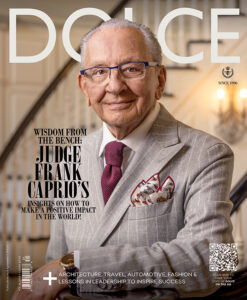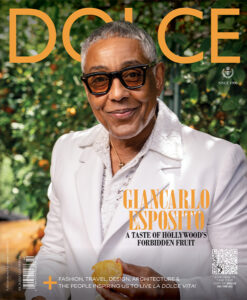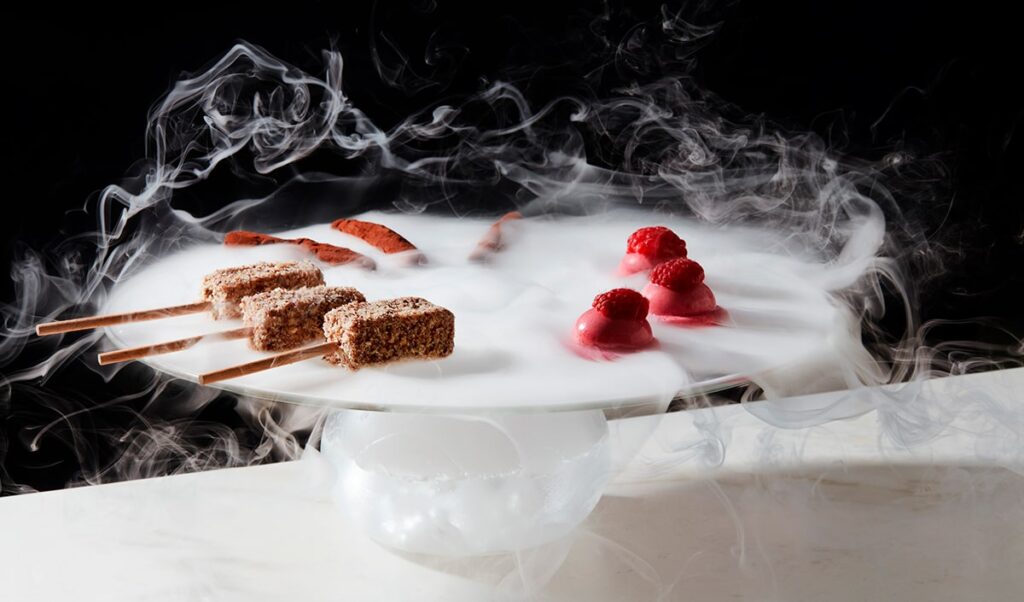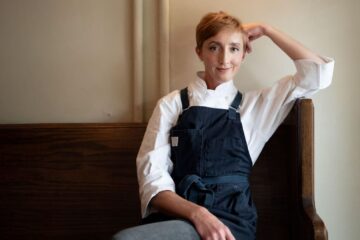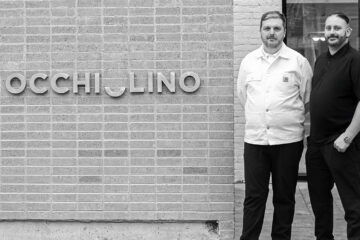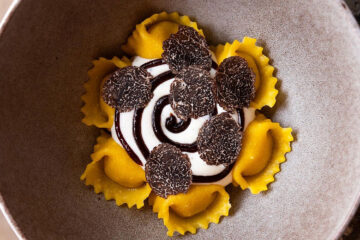Toronto’s Restaurant Scene Gets The Michelin Seal Of Approval
The executive vice-president of destination development, Andrew Weir, shares the process of getting the Michelin Guide to the table.
On September 13, the Michelin Guide announced that 74 restaurants had made its Toronto selection. It marked a first not just for Toronto but for Canada, and it happened after a process of discussions and visits by Michelin to the city. Here, Andrew Weir, who was instrumental in making it happen, discusses the positive impact of having the Michelin Guide in Toronto and what he loves so much about the city.
Q: What do you love most about your role at Destination Toronto?
A: I’ve been very fortunate to have a number of different roles over the years with Destination Toronto. Across all of them, one thing that stands out is the opportunity to be connected with not only the hospitality sector but with different organizations all throughout our community — from the arts to sports, tech to health care, academic institutions and governments at all levels. That connectivity throughout our community is growing stronger and serves as a reminder of how impactful the visitor economy is for people and businesses in Toronto.
Q: What does it mean for the city of Toronto to have the Michelin Guide?
A: Those of us who live here and eat here know how exceptional Toronto’s culinary scene is. It’s simply a fact that Toronto has one of the most diverse and deepest restaurant communities in the world. Now, through the globally trusted voice of Michelin, more people will discover what we have long known to be true.
Q: What does the process of landing the Michelin Guide look like?
A: Michelin undertakes culinary guides only in select cities, so the first step is demonstrating that Toronto belongs in that group. Once we established in some early discussions about the potential for Toronto to join the Michelin family, Michelin inspectors visited the city and conducted a full assessment. No surprise to us, they determined Toronto absolutely has the breadth and depth of culinary scene to merit a Michelin Guide. That led to further discussions about a multi-year marketing partnership to make the guide a reality and, despite a lengthy pandemic delay, it’s very gratifying to see the guide revealed and the talk about Toronto dining growing even louder.
Q: Why hasn’t Toronto landed the Michelin Guide sooner?
A: It’s likely that Toronto’s dining scene could have supported a Michelin Guide years earlier. But it’s great to see that it’s a reality now, especially as the restaurant and broader hospitality sector continues to recover from the pandemic that took such a huge toll on so many people in the sector.
Q: How does the Michelin Guide help to encourage the culinary scene in Toronto?
A: Through our research on other Michelin cities, it is clear that Michelin can be a powerful catalyst for investment in restaurants. On the one hand, existing restaurants invest more in their staff and in sourcing high-quality (typically locally produced) ingredients. On the other hand, more chefs and restaurateurs come to the city to open new restaurants and expand the city’s scene even further.
Q: What are you hoping the Michelin Guide’s impact will be on the city?
A: It starts with our culinary scene and how we elevate the global reputation of our restaurants. That generates more demand and more business for restaurants across the city. And it goes beyond restaurants awareness for Toronto as a whole, leading to potentially more meetings and conventions choosing Toronto because of the heightened appeal of Toronto; more companies choosing to invest here because of the experience available to their workers; more talent choosing to move here. So the impacts start in the restaurants and then extend well beyond into a much broader economic sphere.
Q: Are there any negative impacts of having landed the Michelin Guide?
A: Clearly, with greater demand for restaurants comes the need for more staff, which has been a challenge for the hospitality industry, particularly throughout the different phases of the pandemic. Many of these issues existed before the pandemic, and certainly before Michelin came to Toronto, and need to be addressed in a systemic way. Many communities around the world are confronting the same challenge.
Q: What do you love most about the city of Toronto?
A: As a lifelong Torontonian, I enjoy the contrasts and diversity. It could be the global diversity of a city with a thriving Little Portugal, Greektown, Koreatown, Indian Bazaar, three Little Italys and five Chinatowns, but it’s more than that. It’s the contrast of old and new, sometimes in the same building, like the striking expansions to institutions, like the Art Gallery of Ontario or the Royal Conservatory of Music … or, the height and glisten of the financial towers contrasted against the street-level vibrancy of nearby Kensington Market. It’s all these perspectives and experiences mixed and remixed into what can only, in the end, be Toronto.
Q: Can you talk about some of the restaurants to be announced in the Michelin Guide?
A: It was exciting to see the guide recognize 74 different restaurants. Most importantly, I think, is that the guide also captured 27 different cuisine types. That’s a real testament to Toronto’s diversity. Of course, 13 starred restaurants are a noteworthy achievement for a new Michelin city. But many followers of Michelin content know that often the best finds are in the “Bib Gourmand” and “Recommended” categories, where you really see Toronto’s diversity on display. And there is much discussion already taking place about many more restaurants that can and should be included. I know we will see more restaurants added in the coming months and years, and that really speaks to the strength of our scene that there are so many more that the guide could include.
Q: What are you working on next when it comes to bringing attention to Toronto?
A: Our newest campaign brings the voices of key Toronto residents to global audiences, particularly in the U.S., and says to travellers “You gotta see what we see.” People like Simu Liu have shared their Toronto stories and perspectives in a very personal way that really seems to connect with people. That new campaign launched this summer as we work to inspire travellers to discover — or rediscover — Toronto as they resume travel after the pandemic pause.
Q: What does la dolce vita, the sweet life, mean to you?
A: It’s the life that makes you thrive. For me, I look for a mix of known comforts and new discoveries — the warm embrace of the familiar mixed with the cool edge of something boldly new.
MICHELIN GUIDE REVEALS INAUGURAL TORONTO SELECTION
TWO-MICHELIN-STAR RESTAURANT
• Sushi Masaki Saito (Japanese/Sushi
cuisine)
ONE-MICHELIN-STAR RESTAURANTS
• Aburi Hana (Japanese/Kaiseki cuisine)
• Alo (Contemporary cuisine)
• Alobar Yorkville (French cuisine)
• Don Alfonso 1890 Toronto (Italian cuisine)
• Edulis (Contemporary cuisine)
• Enigma Yorkville (Contemporary cuisine)
• Frilu (Contemporary cuisine)
• Kaiseki Yu-zen Hashimoto (Japanese/
Kaiseki cuisine)
• Osteria Giulia (Italian cuisine)
• Quetzal (Mexican cuisine)
• Shoushin (Japanese/Sushi cuisine)
• Yukashi (Japanese/Kaiseki cuisine)
guide.michelin.com
@michelinguide
Interview by Estelle Zentil



